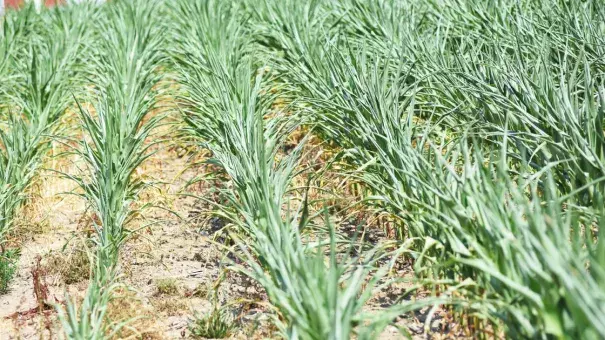Eco Talk: Farms on front line of climate change

The recent extreme weather events being experienced across the country, New York and even Cayuga County have made farmers even more aware of the weather and its potential to impact their crops and livestock as well as their bottom line and ultimately our dinner plates.
According to Cornell’s Institute for Climate Smart Solutions (CICSS), farming operations are on the front lines of a changing climate with impacts that include: 71 percent increase in extreme precipitation events; short-term drought; freeze risk; longer growing seasons; changes to disease, pests and weeds; and increase in high temperatures.
Recent extreme precipitation events have been documented in Cayuga County with the series of heavy rain events in the south end of the county where inches of rain falling in the matter of hours. Significant damages to residential property, roads and cropland was the result. Much of the damage to the land is still visible and may take years to repair.
Farmers have worked hard over the years to install grass waterways and buffers to slow the velocity of water down but none of these practices were designed to control the quantities of rain that fall in these extreme events. Town highway departments have also strategized to provide adequate drainage to the roadways but our road ditches and even culverts for property access are not designed to handle the amounts of water delivered by extreme weather events.
This time last year we knew we were in a drought situation. Wells were running dry, streams drying up and lake levels lowering. Farmers in many areas, depending on soil types, time of planting and chance rainfall patterns saw their crops become stunted and corn started looking more like pineapples than corn. What a difference a year makes!
Fruit growers across the state are also challenged by temperature extremes. Most significantly are apple trees; some of the older varieties are adapted to having cold temperatures through April. When we have a warm up in March or early April followed by temperatures dropping well below freezing; the fruit buds are damaged and in 2012 almost no apples were harvested in New York State.
To reduce risk, fruit growers are looking at changing varieties in their orchards. As a consumer we may be losing some of our favorite apple varieties for newer ones that are being developed to withstand temperature extremes. Apple growers are also looking to relocate orchards to an ideal location to reduce their risk potential as well as investing thousands of dollars in frost protection machines and overhead irrigation for protection.
All in the agricultural field are seeing new diseases and insect pests coming into the area that typically have been known as agricultural pests to the south of New York. Research is continuing on each pest as they are identified. Some pests have naturally occurring control mechanisms that can be implemented while others may require the use of pesticides. New weed species are slowly making their way north as well as temperatures tend to warm.
Livestock producers, to include dairy, are very aware of the increase in temperatures. Barns are being constructed or modified to provide improved ventilation and air movement to keep animals cool and comfortable. Animals out on pasture are being offered more shade opportunities, either naturally or man-made shelters along with greater access to water. It was noted this year that some animals on pasture, due to the increase in rainfall, were experiencing foot problems requiring extra veterinary care and cost to treat.
Not all changes in weather are seen as negative by some in agriculture. The longer growing season while offering a potential in increased risk also offers an increase in yield potential and opportunity to plant other crops. For the past 30 years, soybean acreage in New York and Cayuga County has been increasing because plant breeders have developed varieties adapted to northern climates and the longer growing season has allowed this crop to become part of the crop rotation on many cash grain farms.
Perhaps you may be experiencing the risks and potential benefit of a changing growing season. Over 40 years ago, small shrub called boxwood (Buxus) was not recommended for central New York. Today I see it growing and thriving in more landscapes than ever. I have even been successful in planting and overwintering a southern flowering plant called crape myrtle (Lagerstroemia) thanks to the warmer temperatures and longer growing season.


